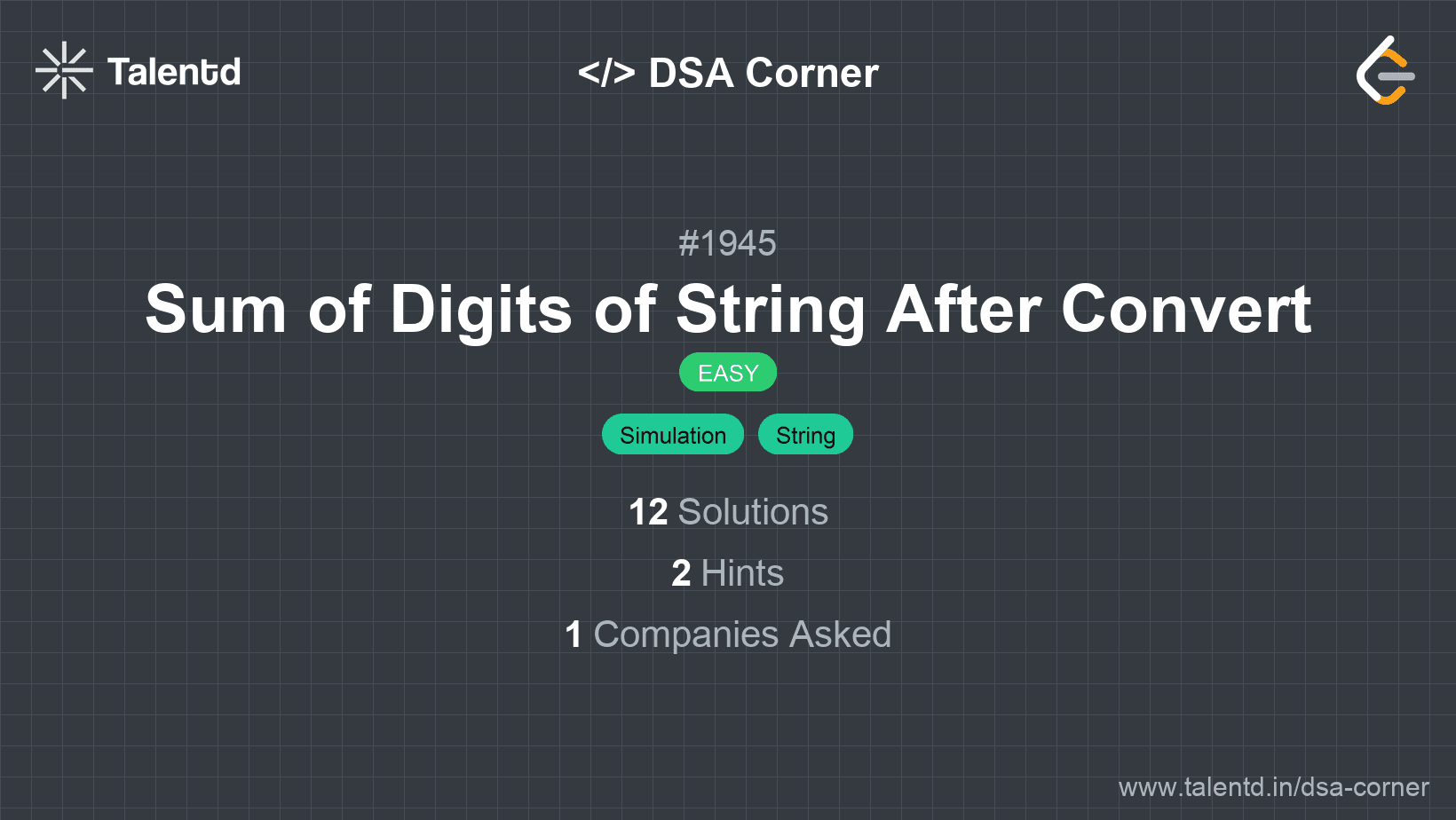
Sponsored
Sponsored
This approach involves converting each character to its corresponding position in the alphabet and forming a numeric string. We then sum the digits of this number 'k' times to get the resulting integer.
Time Complexity: O(N + kM), where N is the length of the string and M is the number of digits in the transformed number.
Space Complexity: O(M), as we store the transformed number as a string.
1using System;
2using System.Linq;
3
4public class Solution {
5 static int DigitSum(string num) {
6 return num.Sum(ch => ch - '0');
7 }
8 public static int SumOfDigitsAfterConvert(string s, int k) {
9 string num = string.Concat(s.Select(c => (c - 'a' + 1).ToString()));
10
11 while (k-- > 0) {
12 int sum = DigitSum(num);
13 num = sum.ToString();
14 }
15
16 return int.Parse(num);
17 }
18
19 public static void Main() {
20 Console.WriteLine(SumOfDigitsAfterConvert("zbax", 2));
21 }
22}C# leverages LINQ for concise operations on collections, such as transforming characters to their alphabetical positions. Digit summation is performed until k transforms are complete.
This approach directly calculates the digit sum during the conversion of the string to a number by aggregating the sum of each digit representation, reducing the need for intermediate large integer string handling.
Time Complexity: O(N + k*logM), where M is the intermediate sum value.
Space Complexity: O(1).
1
public class Solution {
public static int SumOfDigitsAfterConvert(string s, int k) {
int sum = 0;
foreach (var c in s) {
int val = c - 'a' + 1;
while (val > 0) {
sum += val % 10;
val /= 10;
}
}
while (--k > 0) {
int newSum = 0;
while (sum > 0) {
newSum += sum % 10;
sum /= 10;
}
sum = newSum;
}
return sum;
}
public static void Main() {
Console.WriteLine(SumOfDigitsAfterConvert("zbax", 2));
}
}C# provides an iterative approach for summing digits, minimizing interim storage and focusing on direct in-place transformations through loop constructs.